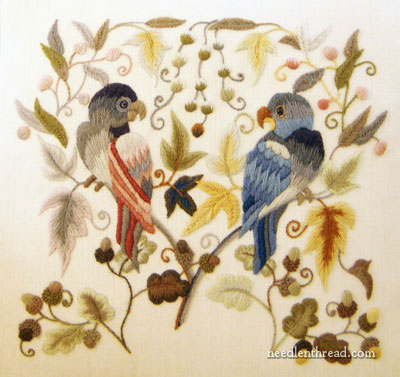September 17, 2012
6 Points to Consider about Hand Embroidery
Here are some thoughts to chew on – six points that I think are worth considering about hand embroidery.
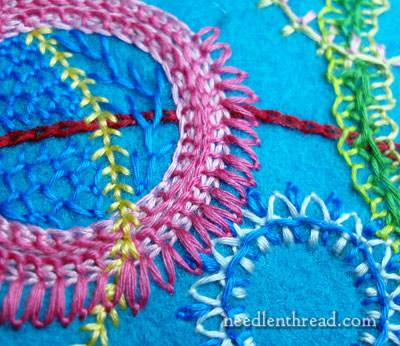
September 17, 2012
Here are some thoughts to chew on – six points that I think are worth considering about hand embroidery.

September 14, 2012
One of my treasured old books in my needlework library is Art Needlework for Decorative Embroidery. It’s the second edition of the book, which was published in 1879 by S.W. Tilton Publishers of Boston. I love this little volume! And fortunately, you can love it, too, because it’s available online.
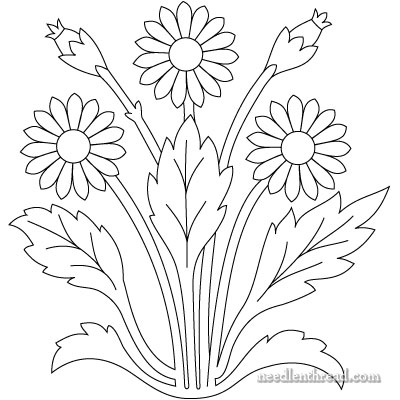
September 13, 2012
Yesterday, we looked at a quick and simple solution for transferring hand embroidery designs to fabric. The whole question of design transfer is a curious one – it seems that most embroidery folks have their favorite ways to transfer embroidery designs to fabric, and pretty much, they stick to them.
I can only claim this to be true occasionally for me. I’m always on the look out for other solutions to the design transfer question. There’s an obvious corollary between the precision, visibility, durability and removability (or hide-ability) of the design transfer and the successful outcome of any hand embroidery project, so I think how we transfer our designs is an important question. Also, the ease and surety of any method of design transfer tends to influence especially beginners – if the design transfer problem is difficult to overcome, it’s easy to lose heart and give up on projects that would otherwise captivate us.
So, here’s a product that I’m currently testing to use for embroidery design transfers, especially for whitework. It’s a chalk product, so I’m not 100% certain it’s going to be Just the Thing. But I’m going to give it a try!
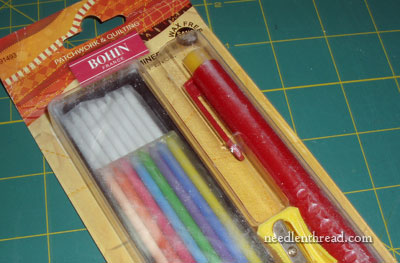
September 12, 2012
When I’m working with a small embroidery design – for example, a small sample element like the interlocking knot in the plaited braid stitch sample I showed you yesterday – to transfer the design to fabric, I use a very simple method that many of you may already know. I think it’s worth mentioning, though, in case you don’t know it, because it’s definitely a time saver and very convenient.
I call it soft lead tracing, but I’m sure there is some technically correct term out there besides this. The idea is the same as carbon paper, without the carbon paper. When you can’t readily trace your design, either because you can’t see well enough through the fabric or you don’t have a sunny window or light box available, this method is a quick life-saver with certain types of designs and certain types of fabric. In fact, I generally prefer it to regular tracing with small motifs, because I think it’s more accurate, and it’s a lot faster and more convenient than hauling out the light box or taping my pattern to a windowpane.
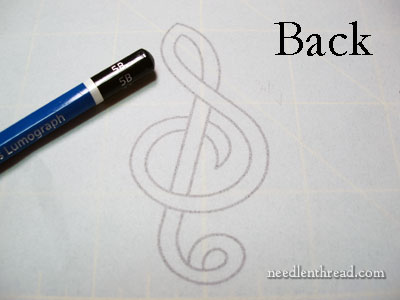
September 11, 2012
I’ve often considered myself a bit of a thread hog. I tend to hog threads. I like threads! And I have a lot of them! But I’m not really calling myself names here, nor am I calling anyone else a name. Instead, I’m referring to a stitch – the plaited braid stitch – which, as mentioned the other day, eats thread like a whale eats plankton.
To show you just how much of a Thread Hog plaited braid stitch is, I’ve done some calculating for you. And when I do calculating, it’s a Big Deal, because I am not, by nature, a calculator.
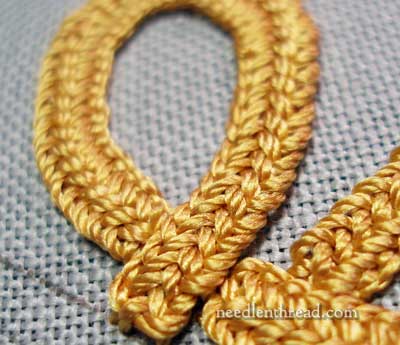
September 10, 2012
Who won Phillipa Turnbull’s new Mellerstain Parrots kit?! Well, to find out, you’ll just have to read on…
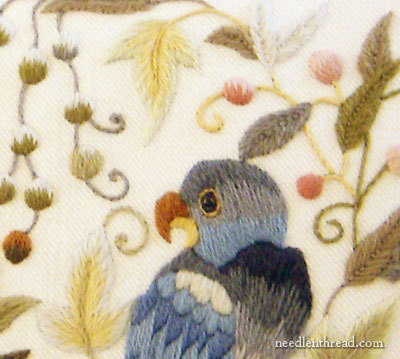
September 8, 2012
Just a quick reminder, in case you didn’t get the opportunity to sign up for this week’s give-away, it ends on Monday morning, bright and early. If you’d like the opportunity to win Phillipa Turnbull’s beautiful Mellerstain Parrot kit, visit the original article here on Needle ‘n Thread for the give-away and follow the instructions to enter before Monday.
